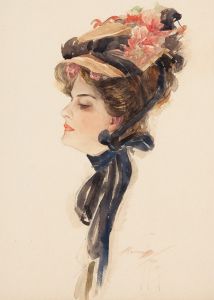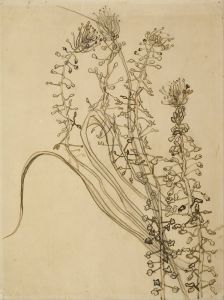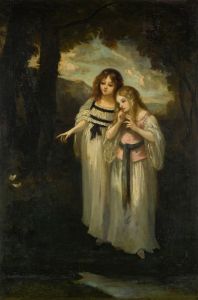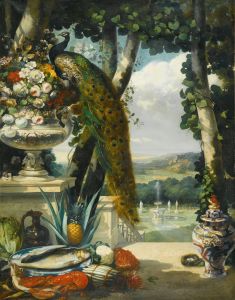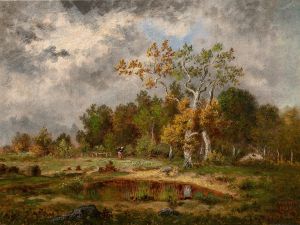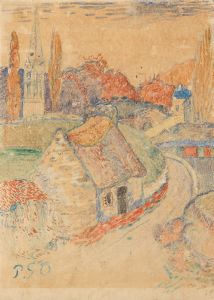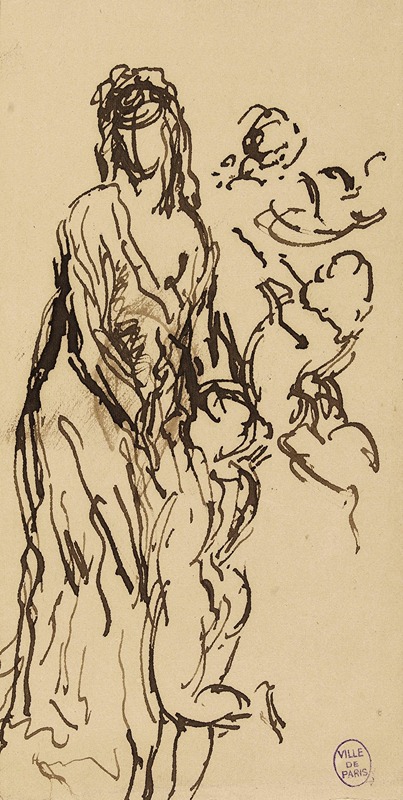
Figure de femme debout avec des amours
A hand-painted replica of Narcisse-Virgile Diaz de La Peña’s masterpiece Figure de femme debout avec des amours, meticulously crafted by professional artists to capture the true essence of the original. Each piece is created with museum-quality canvas and rare mineral pigments, carefully painted by experienced artists with delicate brushstrokes and rich, layered colors to perfectly recreate the texture of the original artwork. Unlike machine-printed reproductions, this hand-painted version brings the painting to life, infused with the artist’s emotions and skill in every stroke. Whether for personal collection or home decoration, it instantly elevates the artistic atmosphere of any space.
Narcisse-Virgile Diaz de la Peña was a prominent 19th-century French painter associated with the Barbizon School, a movement that emphasized naturalism and the depiction of rural landscapes. Born in Bordeaux in 1807, Diaz de la Peña became known for his richly colored and atmospheric landscapes, as well as his figure paintings, which often featured mythological or romantic themes.
"Figure de femme debout avec des amours" is one of Diaz de la Peña's works that exemplifies his interest in combining human figures with elements of fantasy or mythology. The title, which translates to "Standing Female Figure with Cupids," suggests a composition that includes a central female figure accompanied by cherubic figures, commonly referred to as "amours" or cupids. These elements are typical of Diaz de la Peña's oeuvre, where he frequently explored themes of beauty, love, and nature.
Diaz de la Peña's technique is characterized by a vibrant palette and a loose, expressive brushwork that captures the play of light and shadow. This approach is evident in "Figure de femme debout avec des amours," where the artist likely employed his skillful use of color to create a sense of depth and movement. The depiction of the female figure, possibly inspired by classical or romantic ideals, would have been rendered with attention to the interplay of light on skin and fabric, a hallmark of Diaz de la Peña's style.
The inclusion of cupids in the painting aligns with the 19th-century fascination with classical mythology and romantic themes. Cupids, often depicted as playful and mischievous, symbolize love and desire, adding a layer of narrative or allegory to the composition. In Diaz de la Peña's work, these figures might serve to enhance the romantic or idyllic atmosphere, inviting viewers to engage with the painting on both an emotional and aesthetic level.
Diaz de la Peña's contribution to the Barbizon School and his influence on later artists are significant. While the Barbizon painters are primarily known for their landscapes, Diaz de la Peña's figure paintings demonstrate the versatility and breadth of the movement. His ability to blend naturalistic detail with imaginative elements helped pave the way for future developments in French art, including Impressionism.
"Figure de femme debout avec des amours" reflects Diaz de la Peña's artistic vision and his ability to capture the beauty of the human form within a harmonious and evocative setting. The painting is a testament to his skill in merging the real with the ideal, creating works that resonate with viewers through their emotive power and technical mastery.
While specific details about the provenance or exhibition history of "Figure de femme debout avec des amours" may not be widely documented, the painting remains an example of Diaz de la Peña's enduring legacy in the world of art. His works continue to be studied and appreciated for their contribution to the development of 19th-century French painting and their influence on subsequent generations of artists.






